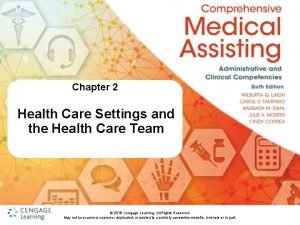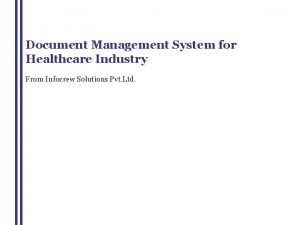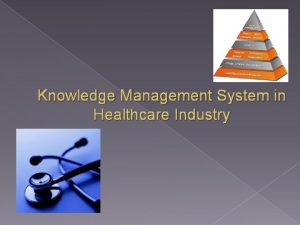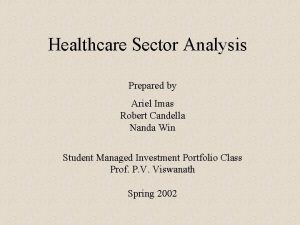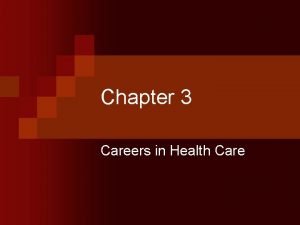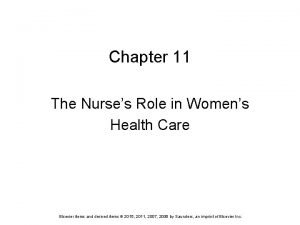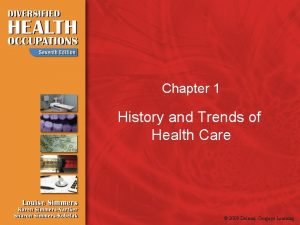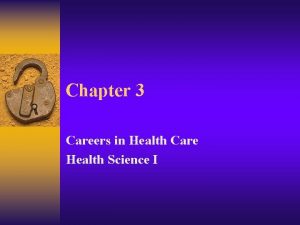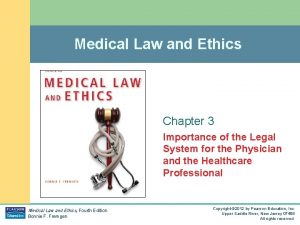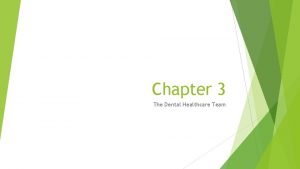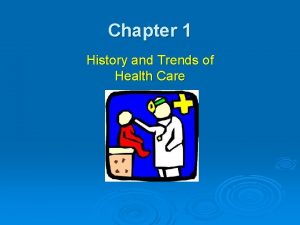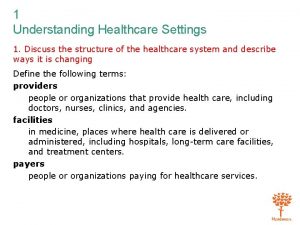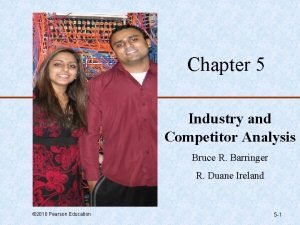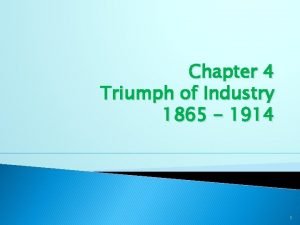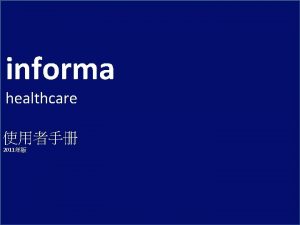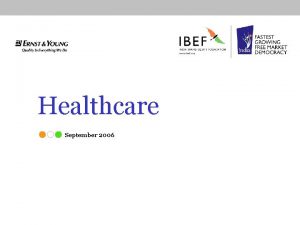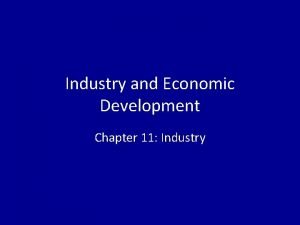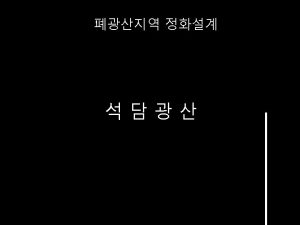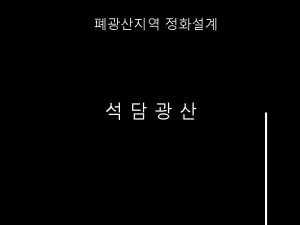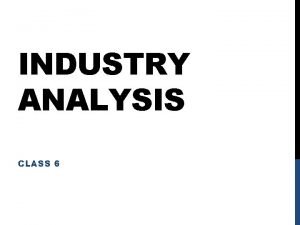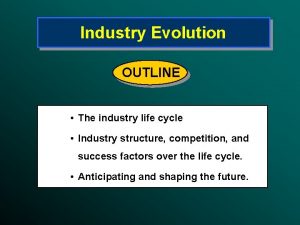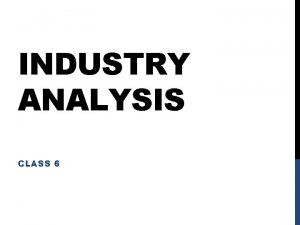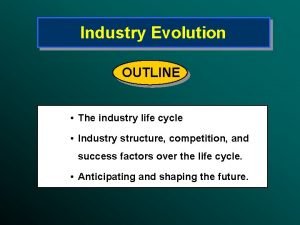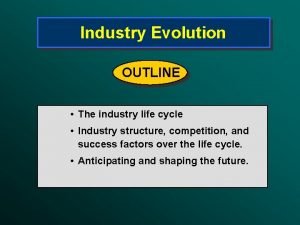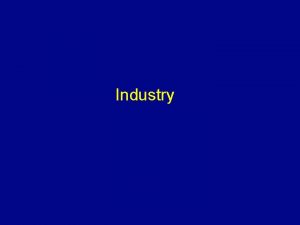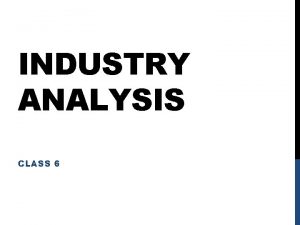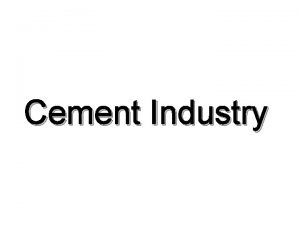The Healthcare Industry Chapter 2 Copyright 2011 2007





























































- Slides: 61

The Healthcare Industry Chapter 2 Copyright © 2011, 2007, 2003, 1999 by Saunders, an imprint of Elsevier Inc. All rights reserved. 1

Questions to consider… Why is continuing medical research so important to the healthcare industry? How can the individual medical assistant contribute to the progress of medicine in today’s world? What is the value in gaining an overview of the entire healthcare industry as one begins a career in medical assisting? Copyright © 2011, 2007, 2003, 1999 by Saunders, an imprint of Elsevier Inc. All rights reserved. 2

Introduction Medicine and medical technology grow at amazingly rapid rates. The medical assistant will be expected to always remain open to learning and growing within the field. Copyright © 2011, 2007, 2003, 1999 by Saunders, an imprint of Elsevier Inc. All rights reserved. 3

This chapter will examine: the history of medicine. national organizations associated with the healthcare industry. various types of healthcare facilities. types of medical practices. different healthcare professionals we encounter in medicine. Copyright © 2011, 2007, 2003, 1999 by Saunders, an imprint of Elsevier Inc. All rights reserved. 4

Medical Language and Mythology Much of our medical terminology comes from Greek and Roman mythology. Terms have also been borrowed from Arabic, Anglo-Saxon, German, and biblical sources. Copyright © 2011, 2007, 2003, 1999 by Saunders, an imprint of Elsevier Inc. All rights reserved. 5

Medical Language and Mythology Atlas bore the heavens on his shoulders, and this name has been given to the first cervical vertebrae. Achilles’ heel is a term used to indicate a weakness of some sort, and this is rooted in Greek mythology. Aesculapius, the son of Apollo, was revered as the god of medicine. The early Greeks worshiped his healing powers and built temples in his honor. Copyright © 2011, 2007, 2003, 1999 by Saunders, an imprint of Elsevier Inc. All rights reserved. 6

Aesculapius The staff of Aesculapius depicts a serpent encircling a staff and signifies the art of healing. This icon has been adopted by the American Medical Association as the symbol of medicine. Copyright © 2011, 2007, 2003, 1999 by Saunders, an imprint of Elsevier Inc. All rights reserved. 7

Caduceus The caduceus, a mythologic staff belonging to Hermes, depicts a staff encircled by two serpents, with wings at the top. The staff was considered to have magical powers. Today it is the icon for the U. S. Army Medical Corps. Copyright © 2011, 2007, 2003, 1999 by Saunders, an imprint of Elsevier Inc. All rights reserved. 8

Medicine in Ancient Times The use of drugs, surgery, and other treatments dates back as far as 5000 BC. Moses offered a group of rules related to health to the Hebrews around 1205 BC. He was an advocate of public health and is considered the first public health officer. Copyright © 2011, 2007, 2003, 1999 by Saunders, an imprint of Elsevier Inc. All rights reserved. 9

Hippocrates The Father of Medicine Wrote the Hippocratic Oath, which is administered to medical school graduates even today View of medicine was based on scientific evidence Credited with taking some of the mysticism out of medicine Argued that illness was not a result of demon possession Copyright © 2011, 2007, 2003, 1999 by Saunders, an imprint of Elsevier Inc. All rights reserved. 10

Galen Prince of Physicians Wrote more than 500 treatises on medically related subjects. Much of his information was inaccurate because it was based on the dissection of apes and pigs instead of the human body. Teachings were considered truthful and valid until human dissections began and physicians could see exactly what was inside the human body. Believed that medicine was not to be practiced for profit. Copyright © 2011, 2007, 2003, 1999 by Saunders, an imprint of Elsevier Inc. All rights reserved. 11

Believe it…or not? Few people challenged Hippocrates and Galen in their teachings because the two were so well respected. Experimentation in medicine was not done during these times. Copyright © 2011, 2007, 2003, 1999 by Saunders, an imprint of Elsevier Inc. All rights reserved. 12

Early Development of Medical Education The invention of the printing press played a major role in the exchange of medical information and ideas, because books and papers could be distributed faster and on a wider scale. Copyright © 2011, 2007, 2003, 1999 by Saunders, an imprint of Elsevier Inc. All rights reserved. 13

Medical Academies and Societies In the seventeenth century, academies or societies were established in Europe that consisted of small groups of men who met to discuss areas of mutual interest. This contributed to the free exchange of medical and scientific ideas. One of the first of these organizations was the Royal Society of London, which was formed in 1662. The Medical Act of 1858 in Great Britain established a statutory body, the General Medical Council, which controlled admission to the medical register and had authority over medical education and examinations. Copyright © 2011, 2007, 2003, 1999 by Saunders, an imprint of Elsevier Inc. All rights reserved. 14

Medical Academies and Societies Johns Hopkins University Medical School became the leader in medical education in the United States. The school partnered with Johns Hopkins Hospital, which exposed students to actual patients during their medical training. This made Johns Hopkins the best option for medical training, and the school remains a leader in medical education today. Copyright © 2011, 2007, 2003, 1999 by Saunders, an imprint of Elsevier Inc. All rights reserved. 15

Quality in Medical Education Abraham Flexner studied various medical schools and determined which ones offered the highest quality education. His “Flexner Report” was one of the earliest examples of the accreditation process. As a result of the publication of his report, many schools that were low ranking closed, many schools were improved, and others emerged as leaders in medical education of the day. Copyright © 2011, 2007, 2003, 1999 by Saunders, an imprint of Elsevier Inc. All rights reserved. 16

Early Medical Pioneers Andreas Vesalius was the Father of Modern Anatomy. He published a book detailing the structure of the human body that conflicted with the earlier teachings of Galen. This led to his persecution by his colleagues. Copyright © 2011, 2007, 2003, 1999 by Saunders, an imprint of Elsevier Inc. All rights reserved. 17

Early Medical Pioneers Copyright © 2011, 2007, 2003, 1999 by Saunders, an imprint of Elsevier Inc. All rights reserved. 18

Early Medical Pioneers Gabriele Fallopius described and named many parts of human anatomy, including the fallopian tubes in the female. Copyright © 2011, 2007, 2003, 1999 by Saunders, an imprint of Elsevier Inc. All rights reserved. 19

Early Medical Pioneers William Harvey discovered that the heart acts as a muscular pump, moving blood throughout the body. He also suggested that blood circulation is a continuous cycle. England considered Harvey its “medical Shakespeare. ” Copyright © 2011, 2007, 2003, 1999 by Saunders, an imprint of Elsevier Inc. All rights reserved. 20

Early Medical Pioneers Anton van Leeuwenhoek discovered the magnification process and was the first to observe bacteria and protozoa through a lens. Copyright © 2011, 2007, 2003, 1999 by Saunders, an imprint of Elsevier Inc. All rights reserved. 21

Early Medical Pioneers Marcello Malpighi was a proponent of using the microscope and was instrumental in making microscope study a prerequisite in medicine. He also described the pulmonary and capillary system, one of the most important discoveries in scientific history. He is considered the first histologist. Copyright © 2011, 2007, 2003, 1999 by Saunders, an imprint of Elsevier Inc. All rights reserved. 22

Scientific Advances in the Eighteenth and Nineteenth Centuries John Hunter is known as the Founder of Scientific Surgery. He presented surgical procedures based on sound pathologic evidence. He was the first to introduce artificial feeding into the stomach through a tube. He studied venereal diseases and pioneered tissue transfer. Copyright © 2011, 2007, 2003, 1999 by Saunders, an imprint of Elsevier Inc. All rights reserved. 23

Scientific Advances in the Eighteenth and Nineteenth Centuries Edward Jenner is best known for giving the first vaccination. He studied smallpox and cowpox, and as a result of Jenner’s work, smallpox has been eradicated from the world. Think of all the diseases for which we now have vaccinations. Jenner is directly responsible for the discovery of the vaccination process. Copyright © 2011, 2007, 2003, 1999 by Saunders, an imprint of Elsevier Inc. All rights reserved. 24

Scientific Advances in the Eighteenth and Nineteenth Centuries: Leopold Auenbrugger and Rene Laennec Leopold Auenbrugger developed the use of percussion in diagnosis. Rene Laennec developed the stethoscope, which began as a rolled paper, allowing him to hear sounds inside the body. Copyright © 2011, 2007, 2003, 1999 by Saunders, an imprint of Elsevier Inc. All rights reserved. 25

Scientific Advances in the Eighteenth and Nineteenth Centuries Ignaz Philipp Semmelweis has been called the Savior of Mothers because of his work fighting puerperal fever. He realized that disinfecting and washing hands when moving from one patient to another would reduce the spread of germs. Unfortunately, he died from puerperal fever himself, having been infected by a cut on his finger during an autopsy. Copyright © 2011, 2007, 2003, 1999 by Saunders, an imprint of Elsevier Inc. All rights reserved. 26

Scientific Advances in the Eighteenth and Nineteenth Centuries Louis Pasteur is one of the most famous contributors to medicine. He is best known for developing pasteurization, a method of destroying microorganisms. He continued his work in the world of bacteria, certain that bacteria were the key to infectious diseases. The last 7 years of his life were devoted to the Pasteur Institute, which still exists in France today. Courtesy National Library of Medicine, Bethesda, Md. Copyright © 2011, 2007, 2003, 1999 by Saunders, an imprint of Elsevier Inc. All rights reserved. 27

Scientific Advances in the Eighteenth and Nineteenth Centuries Joseph Lister is considered the Father of Sterile Surgery, because he realized that Pasteur’s beliefs about bacteria were correct and that microorganisms must be kept out of wounds and surgical sites. Copyright © 2011, 2007, 2003, 1999 by Saunders, an imprint of Elsevier Inc. All rights reserved. 28

Scientific Advances in the Eighteenth and Nineteenth Centuries: Robert Koch and Paul Ehrlich Robert Koch developed Koch’s Postulates, which are rules that must be in place before an organism can be accepted as the causative agent in a disease. He developed tools that are used in laboratories, such as the culture plate, and he discovered that diseases could be transmitted by food and water. Paul Ehrlich is best remembered for his Formula 606, which was designed to fight syphilis. This drug was the first that was injected into the body to destroy a specific organism. Copyright © 2011, 2007, 2003, 1999 by Saunders, an imprint of Elsevier Inc. All rights reserved. 29

Scientific Advances in the Eighteenth and Nineteenth Centuries: Crawford Williamson Long, Wilhelm Konrad Roentgen, and Marie and Pierre Curie Crawford Williamson Long was the first to use an anesthetic agent. He discovered that medical students who were under the influence of ether did not seem to feel pain, and he later successfully used ether as an anesthetic agent during surgery. Wilhelm Konrad Roentgen discovered x-rays and was awarded the Nobel Prize in Physics in 1901. Marie and Pierre Curie discovered radium and were awarded the Nobel Prize in Physics in 1902. Copyright © 2011, 2007, 2003, 1999 by Saunders, an imprint of Elsevier Inc. All rights reserved. 30

Nineteenth-Century Women in Medicine Florence Nightingale was the founder of nursing, known as the “Lady with the Lamp” because of her efforts in caring for wounded soldiers. She founded the Nightingale School and Home for Nurses, which was the beginning of nursing education. Copyright © 2011, 2007, 2003, 1999 by Saunders, an imprint of Elsevier Inc. All rights reserved. 31

Nineteenth-Century Women in Medicine Courtesy National Library of Medicine, Bethesda, Md. Copyright © 2011, 2007, 2003, 1999 by Saunders, an imprint of Elsevier Inc. All rights reserved. 32

Nineteenth-Century Women in Medicine Clara Barton was the founder of the American Red Cross, an agency established originally to keep more accurate records of men missing, wounded, and killed in combat. She first established the Bureau of Records. Later the American Red Cross emerged as a vital organization, and it remains so today. Copyright © 2011, 2007, 2003, 1999 by Saunders, an imprint of Elsevier Inc. All rights reserved. 33

Nineteenth-Century Women in Medicine: Elizabeth Blackwell and Lillian Wald Elizabeth Blackwell was the first female medical doctor in the United States. She also established the New York Infirmary for Indigent Women and Children, which was the first hospital staffed entirely by women. Lillian Wald was instrumental in establishing the world’s first public school nursing system. Copyright © 2011, 2007, 2003, 1999 by Saunders, an imprint of Elsevier Inc. All rights reserved. 34

Nineteenth-Century Women in Medicine Margaret Sanger was a proponent of birth control for women at a time when it was illegal to import or distribute any device designed to prevent pregnancy or induce abortion. The research she advocated into hormonal contraception eventually led to the development of the birth control pill. She was named honorary chairperson of the Planned Parenthood Federation of America when it was formed in 1941. Copyright © 2011, 2007, 2003, 1999 by Saunders, an imprint of Elsevier Inc. All rights reserved. 35

Twenty-First Century Medicine Walter Reed proved yellow fever could be transmitted by a mosquito bite. Sir Frederick Banting and Charles Best isolated insulin for use in treating diabetics. Copyright © 2011, 2007, 2003, 1999 by Saunders, an imprint of Elsevier Inc. All rights reserved. 36

Twenty-First Century Medicine Sir Alexander Fleming discovered penicillin accidentally as he was researching. Helen Taussig, Alfred Blalock, and Vivien Thomas developed the lifesaving Blalock-Taussig procedure for blue babies. Copyright © 2011, 2007, 2003, 1999 by Saunders, an imprint of Elsevier Inc. All rights reserved. 37

Twenty-First Century Medicine Jonas Salk and Albert Sabin developed an injectable vaccination against polio. Werner Forssmann developed the cardiac catheterization technique. Copyright © 2011, 2007, 2003, 1999 by Saunders, an imprint of Elsevier Inc. All rights reserved. 38

Twenty-First Century Medicine Christian Barnard performed the first human heart transplant. Elisabeth Kübler-Ross pioneered the understanding of the grief process. Copyright © 2011, 2007, 2003, 1999 by Saunders, an imprint of Elsevier Inc. All rights reserved. 39

Twenty-First Century Medicine Dr. David Ho is one of the most brilliant minds working on the AIDS crisis today. He is the Scientific Director and Chief Executive Officer of the Aaron Diamond AIDS Research Center in New York. Copyright © 2011, 2007, 2003, 1999 by Saunders, an imprint of Elsevier Inc. All rights reserved. 40

Twenty-First Century Medicine Dr. Eve Slater is the former Assistant Secretary for Health in the Department of Health and Human Services. She currently serves on numerous boards for aggressive medical research organizations. Copyright © 2011, 2007, 2003, 1999 by Saunders, an imprint of Elsevier Inc. All rights reserved. 41

Twenty-First Century Medicine Dr. C. Everett Koop is a dedicated, colorful man who continues to contribute to medicine. He is a former Surgeon General of the United States. Copyright © 2011, 2007, 2003, 1999 by Saunders, an imprint of Elsevier Inc. All rights reserved. 42

Twenty-First Century Medicine Dr. Marcia Angell is the former editor-in-chief of the New England Journal of Medicine, a leading publication widely read and regarded by physicians. Dr. Angell currently is a senior lecturer at Harvard Medical School. Copyright © 2011, 2007, 2003, 1999 by Saunders, an imprint of Elsevier Inc. All rights reserved. 43

Twenty-First Century Medicine Dr. Anthony Fauci was the fifth most cited scientist during the years 1981 to 1994. He is the Director of the National Institute of Allergy and Infectious Diseases at NIH, where his career has spanned over 40 years. Copyright © 2011, 2007, 2003, 1999 by Saunders, an imprint of Elsevier Inc. All rights reserved. 44

Twenty-First Century Medicine Dr. Antonia Novello is New York State’s Health Commissioner and was the first Hispanic and first woman to be appointed Surgeon General of the United States. Copyright © 2011, 2007, 2003, 1999 by Saunders, an imprint of Elsevier Inc. All rights reserved. 45

The National View of Health Care The World Health Organization (WHO) Specialized agency of the United Nations Promotes cooperation among nations to control and eliminate diseases worldwide Created and maintains the ICD coding system to classify diseases and conditions Instrumental in discussions of ethical and moral implications of medical issues Copyright © 2011, 2007, 2003, 1999 by Saunders, an imprint of Elsevier Inc. All rights reserved. 46

The National View of Health Care Department of Health and Human Services (DHHS) Principal U. S. agency for providing essential human services Ø Consists of more than 300 programs Ø Oversees Medicare and Medicaid programs Ø Copyright © 2011, 2007, 2003, 1999 by Saunders, an imprint of Elsevier Inc. All rights reserved. 47

The National View of Health Care United States Army Medical Research Institute of Infectious Diseases (USAMRIID) Conducts research programs in national defense and infectious diseases that benefit everyone Ø Works extensively with WHO and CDC Ø Researches four biosafety levels of diseases with varying degrees of biohazard potential Ø Copyright © 2011, 2007, 2003, 1999 by Saunders, an imprint of Elsevier Inc. All rights reserved. 48

The National View of Health Care Centers for Disease Control and Prevention (CDC) Principal U. S. agency concerned with health and safety of people throughout the world Ø Clearinghouse for health information and statistics Ø Researches the origin and occurrence of diseases Ø Develops methods for disease control and prevention Ø Copyright © 2011, 2007, 2003, 1999 by Saunders, an imprint of Elsevier Inc. All rights reserved. 49

The National View of Health Care National Institutes of Health Division of the Department of Health and Human Services Ø Thousands of research projects are underway at any given time Ø Furnishes biomedical information to healthcare professions Ø Copyright © 2011, 2007, 2003, 1999 by Saunders, an imprint of Elsevier Inc. All rights reserved. 50

The National View of Health Care Health Industry Councils Exist on local levels Ø Designed to promote the healthcare industry in a specific area Ø Keep statistical records about the healthcare industry Ø Work to draw new medically related business to the area Ø Copyright © 2011, 2007, 2003, 1999 by Saunders, an imprint of Elsevier Inc. All rights reserved. 51

Types of Healthcare Facilities Hospitals Classified according to type of care and services they provide and their ownership. Ø Some hospitals are for profit, and some are nonprofit. Ø Nonprofit organizations may make money, but the money must be reinvested back into the facility. Ø Acute care hospitals are equipped to handle the most severe emergencies. Ø Subacute care hospitals offer less extensive patient care. Ø Copyright © 2011, 2007, 2003, 1999 by Saunders, an imprint of Elsevier Inc. All rights reserved. 52

Types of Healthcare Facilities Hospitals Specialty, teaching, and community hospitals also exist in the healthcare arena. Ø Private hospitals are usually run by a corporation. Ø Numerous departments within the hospitals carry out a wide variety of functions. Ø Credentialing involves determining if an individual should have staff privileges. Ø Hospitals go through an accreditation process, often conducted by JCAHO. Ø Standards or indicators are used to determine compliance with regulations. Ø Copyright © 2011, 2007, 2003, 1999 by Saunders, an imprint of Elsevier Inc. All rights reserved. 53

Types of Healthcare Facilities Ambulatory Care Physician’s offices may be single practice, partnerships, group practices, or multispecialty clinics. Other ambulatory care centers include: • Occupational health centers • Sleep centers • Physical therapy centers • Urgent care centers • Freestanding surgical centers • Dialysis centers • Skilled nursing facilities • Assisted living facilities • Independent retirement communities Copyright © 2011, 2007, 2003, 1999 by Saunders, an imprint of Elsevier Inc. All rights reserved. 54

Types of Healthcare Facilities Other Healthcare Facilities Physician office laboratories Ø Diagnostic laboratories Ø Home health agencies Ø Medical suppliers Ø Rehabilitation facilities Ø Copyright © 2011, 2007, 2003, 1999 by Saunders, an imprint of Elsevier Inc. All rights reserved. 55

Medical Practices Sole Proprietorship Partnership Corporation Copyright © 2011, 2007, 2003, 1999 by Saunders, an imprint of Elsevier Inc. All rights reserved. 56

Healthcare Professionals The Title of Doctors of Medicine Doctors of Osteopathy Hospitalists Doctors of Chiropractic Dentists Optometrists Podiatrists Other Doctorates Copyright © 2011, 2007, 2003, 1999 by Saunders, an imprint of Elsevier Inc. All rights reserved. 57

Licensed or Certified Professionals Physician assistants Nurse practitioners Nurse anesthetists Registered nurses Licensed practical/vocational nurses Medical technologists Medical laboratory technicians Physical therapists Respiratory therapists Copyright © 2011, 2007, 2003, 1999 by Saunders, an imprint of Elsevier Inc. All rights reserved. 58

Licensed or Certified Professionals Occupational therapists Cardiovascular technologists Diagnostic medical sonographers or technologists Radiology technicians Paramedics Emergency medical technicians Registered dieticians Copyright © 2011, 2007, 2003, 1999 by Saunders, an imprint of Elsevier Inc. All rights reserved. 59

Summary of Scenario Points to Reinforce: Medical research in developing new techniques, procedures, and medicines is critical. Medical research allows us to discover new diseases or new information about current diseases. Copyright © 2011, 2007, 2003, 1999 by Saunders, an imprint of Elsevier Inc. All rights reserved. 60

Closing Comments This is an exciting time to enter the healthcare industry. Medical assisting is a versatile career field that offers incredible opportunities to new graduates and seasoned professionals. Copyright © 2011, 2007, 2003, 1999 by Saunders, an imprint of Elsevier Inc. All rights reserved. 61
 Healthcare and the healthcare team chapter 2
Healthcare and the healthcare team chapter 2 Sports medicine definition
Sports medicine definition Copyright 2007
Copyright 2007 Pearson
Pearson Dms for healthcare industry
Dms for healthcare industry Knowledge management system in healthcare
Knowledge management system in healthcare Ariel imas
Ariel imas Chapter 3 careers in health care
Chapter 3 careers in health care Chapter 11 the nurse's role in women's healthcare
Chapter 11 the nurse's role in women's healthcare Chapter 1 history and trends of health care
Chapter 1 history and trends of health care Chapter 3 careers in healthcare
Chapter 3 careers in healthcare Chapter 3 healthcare laws and ethics
Chapter 3 healthcare laws and ethics Dental supply person definition
Dental supply person definition Chapter 1 history and trends of health care
Chapter 1 history and trends of health care Chapter 1 understanding healthcare settings
Chapter 1 understanding healthcare settings Cognitive learning theory
Cognitive learning theory Hình ảnh bộ gõ cơ thể búng tay
Hình ảnh bộ gõ cơ thể búng tay Lp html
Lp html Bổ thể
Bổ thể Tỉ lệ cơ thể trẻ em
Tỉ lệ cơ thể trẻ em Voi kéo gỗ như thế nào
Voi kéo gỗ như thế nào Chụp tư thế worms-breton
Chụp tư thế worms-breton Hát lên người ơi alleluia
Hát lên người ơi alleluia Các môn thể thao bắt đầu bằng tiếng chạy
Các môn thể thao bắt đầu bằng tiếng chạy Thế nào là hệ số cao nhất
Thế nào là hệ số cao nhất Các châu lục và đại dương trên thế giới
Các châu lục và đại dương trên thế giới Công thức tính độ biến thiên đông lượng
Công thức tính độ biến thiên đông lượng Trời xanh đây là của chúng ta thể thơ
Trời xanh đây là của chúng ta thể thơ Cách giải mật thư tọa độ
Cách giải mật thư tọa độ 101012 bằng
101012 bằng Phản ứng thế ankan
Phản ứng thế ankan Các châu lục và đại dương trên thế giới
Các châu lục và đại dương trên thế giới Thể thơ truyền thống
Thể thơ truyền thống Quá trình desamine hóa có thể tạo ra
Quá trình desamine hóa có thể tạo ra Một số thể thơ truyền thống
Một số thể thơ truyền thống Cái miệng xinh xinh thế chỉ nói điều hay thôi
Cái miệng xinh xinh thế chỉ nói điều hay thôi Vẽ hình chiếu vuông góc của vật thể sau
Vẽ hình chiếu vuông góc của vật thể sau Thế nào là sự mỏi cơ
Thế nào là sự mỏi cơ đặc điểm cơ thể của người tối cổ
đặc điểm cơ thể của người tối cổ V cc
V cc Vẽ hình chiếu đứng bằng cạnh của vật thể
Vẽ hình chiếu đứng bằng cạnh của vật thể Phối cảnh
Phối cảnh Thẻ vin
Thẻ vin đại từ thay thế
đại từ thay thế điện thế nghỉ
điện thế nghỉ Tư thế ngồi viết
Tư thế ngồi viết Diễn thế sinh thái là
Diễn thế sinh thái là Dạng đột biến một nhiễm là
Dạng đột biến một nhiễm là Số nguyên là gì
Số nguyên là gì Tư thế ngồi viết
Tư thế ngồi viết Lời thề hippocrates
Lời thề hippocrates Thiếu nhi thế giới liên hoan
Thiếu nhi thế giới liên hoan ưu thế lai là gì
ưu thế lai là gì Sự nuôi và dạy con của hổ
Sự nuôi và dạy con của hổ Khi nào hổ mẹ dạy hổ con săn mồi
Khi nào hổ mẹ dạy hổ con săn mồi Sơ đồ cơ thể người
Sơ đồ cơ thể người Từ ngữ thể hiện lòng nhân hậu
Từ ngữ thể hiện lòng nhân hậu Thế nào là mạng điện lắp đặt kiểu nổi
Thế nào là mạng điện lắp đặt kiểu nổi Competitors analysis grid
Competitors analysis grid Chapter 4 the triumph of industry
Chapter 4 the triumph of industry Chapter 4 the horticulture industry
Chapter 4 the horticulture industry Chapter 1 welcome to the industry
Chapter 1 welcome to the industry
